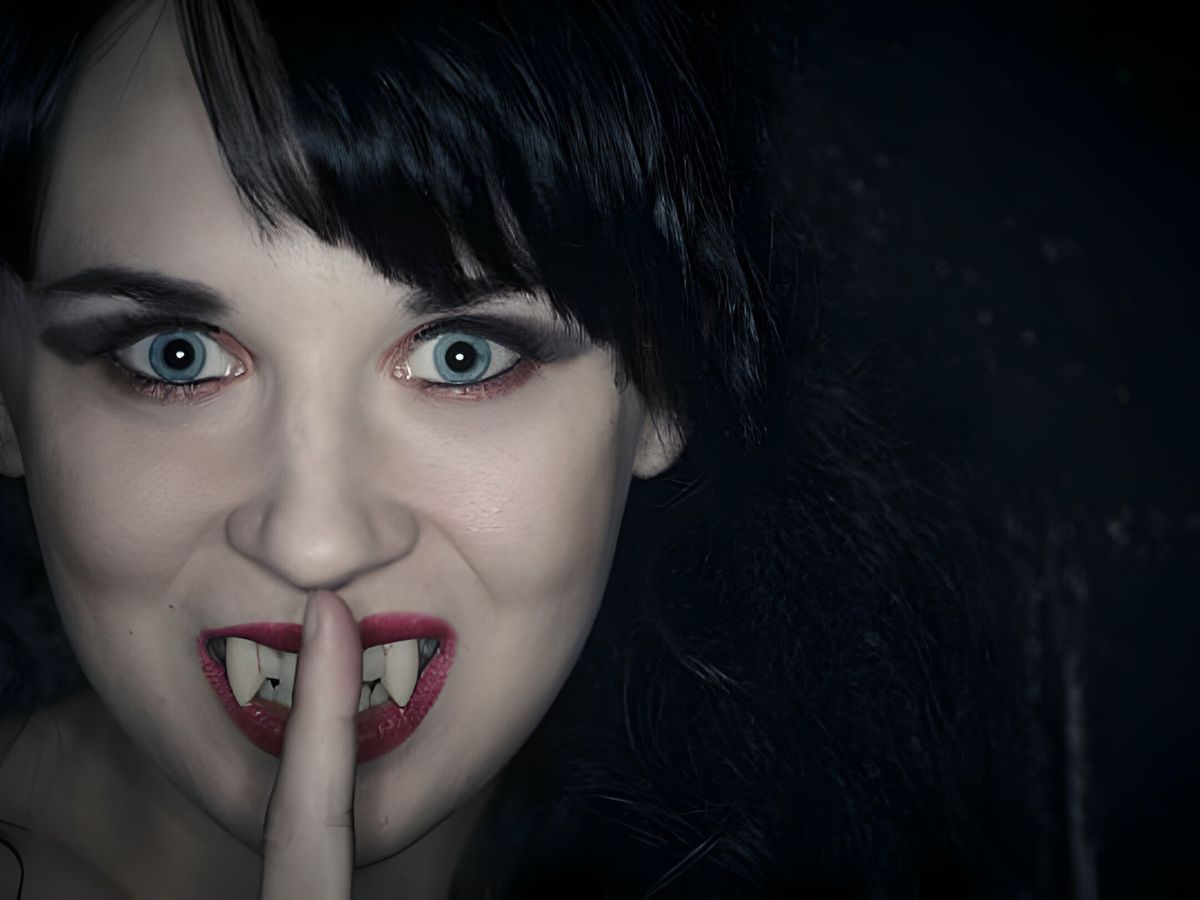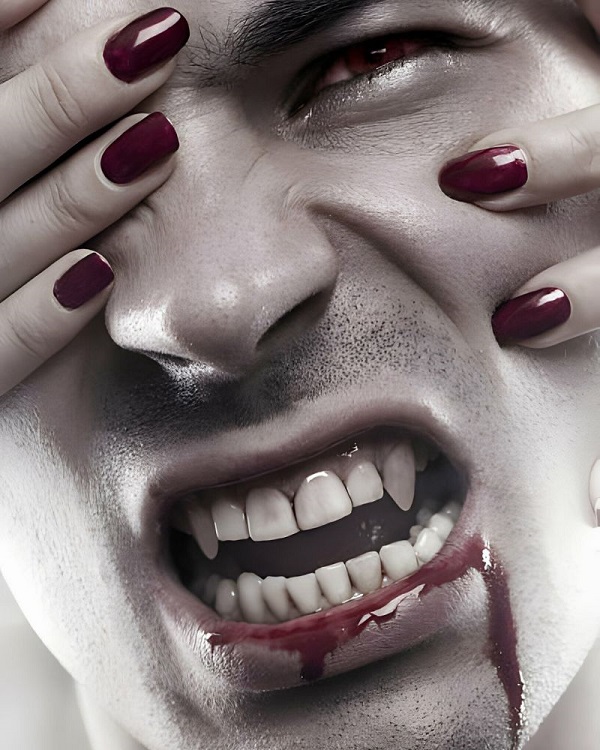
Unveiling the Enigma: The Truth Behind Vampire Teeth!
Understanding the Origins of Vampire Teeth
The origins of vampire teeth delve deep into the annals of folklore and mythology, spanning cultures and centuries of storytelling. These sharp, elongated fangs have long been associated with creatures of the night, serving as both symbols of fear and fascination. From ancient tales of blood-drinking demons to modern depictions in literature and cinema, vampire teeth have captured the imagination of people around the world. While the precise origins of this iconic feature remain shrouded in mystery, its enduring presence in human culture speaks to our enduring fascination with the supernatural and the unknown. Whether viewed as tools of predation or symbols of otherworldly allure, vampire teeth continue to intrigue and captivate audiences, reminding us of the enduring power of myth and legend in shaping our collective imagination.
Tracing the Evolution of Vampire Teeth

Tracing the evolution of vampire teeth unveils a fascinating journey through centuries of folklore, literature, and cinematic history. From ancient myths of blood-drinking demons to modern interpretations in popular culture, the depiction of vampire teeth has evolved dramatically over time. Early tales often portrayed vampires with elongated fangs, emphasizing their predatory nature and fearsome reputation. With the advent of literature and cinema, particularly iconic portrayals like Bela Lugosi’s Dracula, vampire teeth became synonymous with the allure of the undead.
In more recent years, adaptations like the “Twilight” series have redefined the image of vampires, presenting them as both mysterious and captivating figures. Despite these transformations, vampire teeth remain a timeless symbol of the supernatural, reflecting humanity’s enduring fascination with creatures of the night. The evolution of vampire teeth reflects not only changes in storytelling but also shifts in societal perceptions and cultural values, highlighting the enduring power of these mythical creatures in capturing our collective imagination.
From Lugosi to Twilight: Vampire Teeth in Pop Culture
The evolution of vampire teeth in popular culture traces a mesmerizing journey from the iconic portrayals of Bela Lugosi’s Dracula to the modern romanticized vampires of the “Twilight” saga. Lugosi’s depiction of sharp, elongated fangs set the standard for vampire imagery, instilling fear and fascination in audiences. These protruding teeth symbolized the predatory nature of vampires, capturing the essence of their nocturnal existence.
In contrast, the “Twilight” series introduced a new interpretation of vampires, with their teeth serving as a symbol of allure rather than terror. The protagonists’ sharp canines became a trademark feature, emphasizing their supernatural charm and heightened senses. This shift in portrayal reflects changing cultural attitudes towards vampires, from creatures of horror to romanticized figures of desire. Yet, whether feared or adored, vampire teeth remain an enduring symbol of the undead, continuing to captivate audiences and shape the ever-evolving landscape of popular culture.
Unveiling the Purpose: Vampire Teeth in Nature

The enigmatic nature of vampire teeth extends beyond folklore and fiction, finding parallels in the natural world. One striking example lies in the adaptation of the vampire bat, whose sharp incisors are finely tuned for piercing the skin of its prey. These specialized teeth allow the vampire bat to access the blood vessels of its victims with precision, obtaining a nutrient-rich meal without causing significant harm.
This unique feeding strategy showcases the evolutionary significance of sharp teeth in facilitating specialized diets among various animal species. Beyond the realm of blood-drinking creatures, sharp teeth serve essential functions for carnivores, herbivores, and omnivores alike, reflecting the diverse roles teeth play in the survival and adaptation of species in the wild. By exploring the biological basis of vampire teeth, we gain a deeper understanding of the intricate mechanisms at play in nature’s design, illuminating the remarkable diversity and ingenuity of life on Earth.
Sharp Teeth Unleashed: Diverse Functions in Animals
Beyond their association with bloodlust in creatures of the night, sharp teeth serve a multitude of purposes across the animal kingdom. Carnivores rely on these formidable dental structures to tear through flesh and consume their prey, showcasing the efficiency of nature’s design in facilitating hunting and feeding behaviors. Herbivores utilize their sharp teeth to graze on tough vegetation, enabling them to extract nutrients from fibrous plant material.
Even omnivores, like humans, benefit from sharp teeth, particularly canines, which aid in tearing and cutting food for consumption. This diverse array of functions highlights the versatility and adaptability of sharp teeth in meeting the dietary needs of various species. From hunting to foraging, sharp teeth play a crucial role in the survival and ecological niche of animals, underscoring the intricate balance of nature’s ecosystems.
The Human Connection: Are Vampire Teeth Real?
Despite the allure of vampire lore, humans do not possess the exaggerated fangs often depicted in fiction. However, natural variations in tooth size and shape exist among individuals. Some may have more pronounced canines, resembling the iconic image of vampire teeth. Yet, these variations fall within the spectrum of normal human dental anatomy and do not imbue individuals with supernatural powers.
While the fascination with vampire teeth persists, particularly in popular culture, the truth remains grounded in the realm of biology. Human teeth, while diverse in appearance, serve primarily functional purposes and lack the mystical qualities attributed to their fictional counterparts. Thus, while the allure of the undead may captivate our imaginations, the reality of human dental anatomy is far less fantastical.
Vampire Fangs: Eternal Fascination

Vampire teeth, with their iconic sharpness and mystique, hold an enduring appeal that transcends time and culture. From ancient folklore to modern-day literature and cinema, these fangs have fascinated and captivated audiences around the globe. They symbolize not only the fear of the unknown but also the allure of the forbidden. The enduring appeal of vampire teeth lies in their ability to evoke a sense of mystery, danger, and desire all at once.
Whether feared as symbols of predatory evil or romanticized as emblems of eternal youth and passion, vampire fangs continue to intrigue and enthrall, serving as potent symbols in our collective imagination. Their timeless allure reminds us of humanity’s fascination with the supernatural and the eternal quest to explore the darker recesses of the human psyche.
Conclusion
In conclusion, vampire teeth, with their rich history steeped in folklore and their enduring presence in popular culture, serve as potent symbols of our fascination with the unknown and the supernatural. From ancient legends to modern interpretations, these sharp fangs evoke both fear and desire, captivating audiences with their mysterious allure.
While the reality of vampire teeth may be rooted in myth and fiction, their impact on our collective imagination is undeniable. As we continue to embrace the mythos surrounding vampire lore, we are reminded of the timeless appeal of these enigmatic creatures and their enduring place in our cultural consciousness.
FAQs
While vampire teeth are a staple of folklore and fiction, they do not exist in the same exaggerated form as depicted in popular culture. However, some individuals may have pronounced canines, resembling the iconic image of vampire fangs.
In folklore, vampire teeth are portrayed as tools for feeding on blood. However, in reality, sharp teeth serve various functions in the animal kingdom, such as tearing through flesh for carnivores or grazing on vegetation for herbivores.
No, vampire teeth do not confer any supernatural powers. While they may be associated with mythical creatures in literature and cinema, in reality, they are simply a natural variation in dental anatomy.
Vampire teeth have become iconic symbols of fear, desire, and mystery, thanks to their portrayal in folklore, literature, and cinema. They evoke a sense of danger and allure, capturing the imagination of audiences worldwide
Some individuals may choose to undergo dental procedures to alter the appearance of their teeth, including lengthening or sharpening the canines. However, these procedures are purely cosmetic and do not grant any supernatural abilities.
Vampire teeth are often referred to as fangs or incisors, depending on their specific appearance and function in folklore and fiction.
While exaggerated vampire-like teeth are not typical, natural variations in tooth size and shape, particularly in the canines, are entirely normal among humans.
Fake vampire teeth can be easily made using materials like dental wax, polymorph plastic, or even certain types of food-safe silicone. These materials can be molded and shaped to resemble sharp fangs, providing a temporary and realistic-looking option for costumes or theatrical purposes.










Leave a Reply